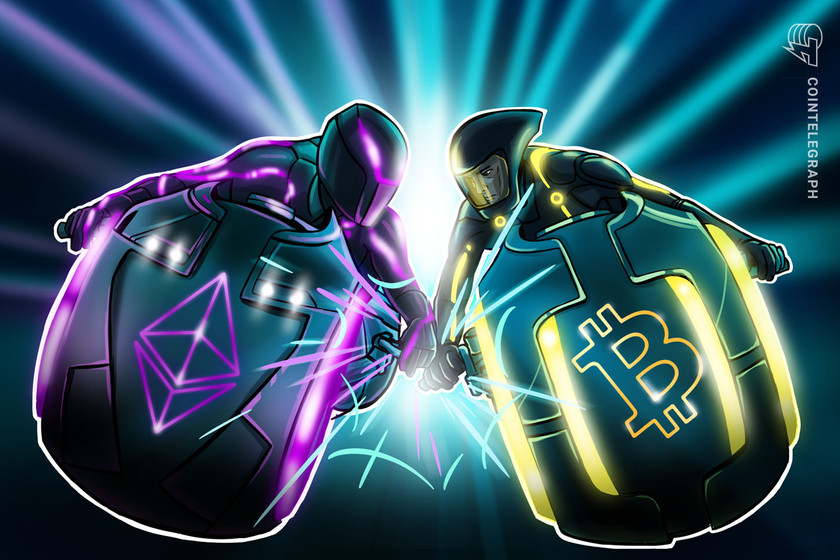
While Ethereum created history by taking over Bitcoin in the options market, the ETH futures contract entered price backwardation.
Ether (ETH) has taken over Bitcoin (BTC) in the options market for the first time in history as the open interest (OI) of Deribit Ether options with a value of $5.6 billion exceeded the OI of Bitcoin options worth $4.6 billion by 32%.

OI is calculated by adding all the contracts from opened trades and subtracting the contracts when a trade is closed. It is used as an indicator to determine market sentiment and the strength behind price trends. Deribit is the world’s biggest BTC and ETH options exchange, accounting for more than 90% of the global trading volume.
The data from the Deribit exchange highlighted that ETH options mainly call options, with a Put/Call ratio of 0.26. The ETH Put/Call ratio has hit a new yearly low as the Merge date nears.

Under the put option, buyers have the right but not the obligation to sell the underlying asset at a predetermined price on or before a specific date. Overall, put buyers are implicitly bearish while a call option trader is bullish.
A put/call ratio greater than 0.7 or exceeding one, indicates bearish market sentiment while a put/call ratio value of lower than 0.7, and falling close to 0.5 indicates an emerging bullish trend.
Related: Ethereum Merge: How will the PoS transition impact the ETH ecosystem?
The recent surge of ETH OI in the options market with an underlying bullish sentiment among traders is being attributed to the upcoming Merge slated for the third week of September.
While ETH continues to see growing dominance in the options market, the ETH futures quarterly contracts, scheduled to expire in December 2022, have slipped into backwardation, wherein the futures price becomes lower than the spot price. Ether’s spot and futures price grew to -$8 on Aug. 1. While this might seem like a bearish outlook, BTC surged 15% after price backwardation in June.
Apart from the growing bullish anticipation for the upcoming proof-of-stake (PoS) transition, analysts have also pointed toward the possible airdrop scenario in case of a chain split. A survey from Galois Capital revealed that 33.1% of respondents believe the upgrade would lead to a hard fork, while 53.7% anticipated a smooth network transition.





















